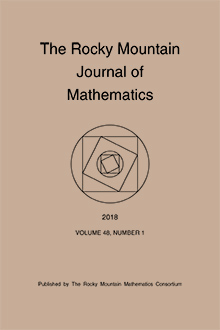Abstract
Bohr phenomenon for analytic functions , where , was first introduced by Harald Bohr in and deals with finding the largest radius , , such that the inequality holds for whenever holds in the unit disk . The Bohr phenomenon for harmonic functions of the form , where and , is to find the largest radius , such that
holds for , where is the Euclidean distance between and the boundary of . We prove several improved versions of the sharp Bohr radius for the classes of harmonic and univalent functions. Further, we prove several corollaries as a consequence of the main results.
Citation
Molla Basir Ahamed. Vasudevarao Allu. "Bohr phenomenon for certain classes of harmonic mappings." Rocky Mountain J. Math. 52 (4) 1205 - 1225, August 2022. https://doi.org/10.1216/rmj.2022.52.1205
Information





